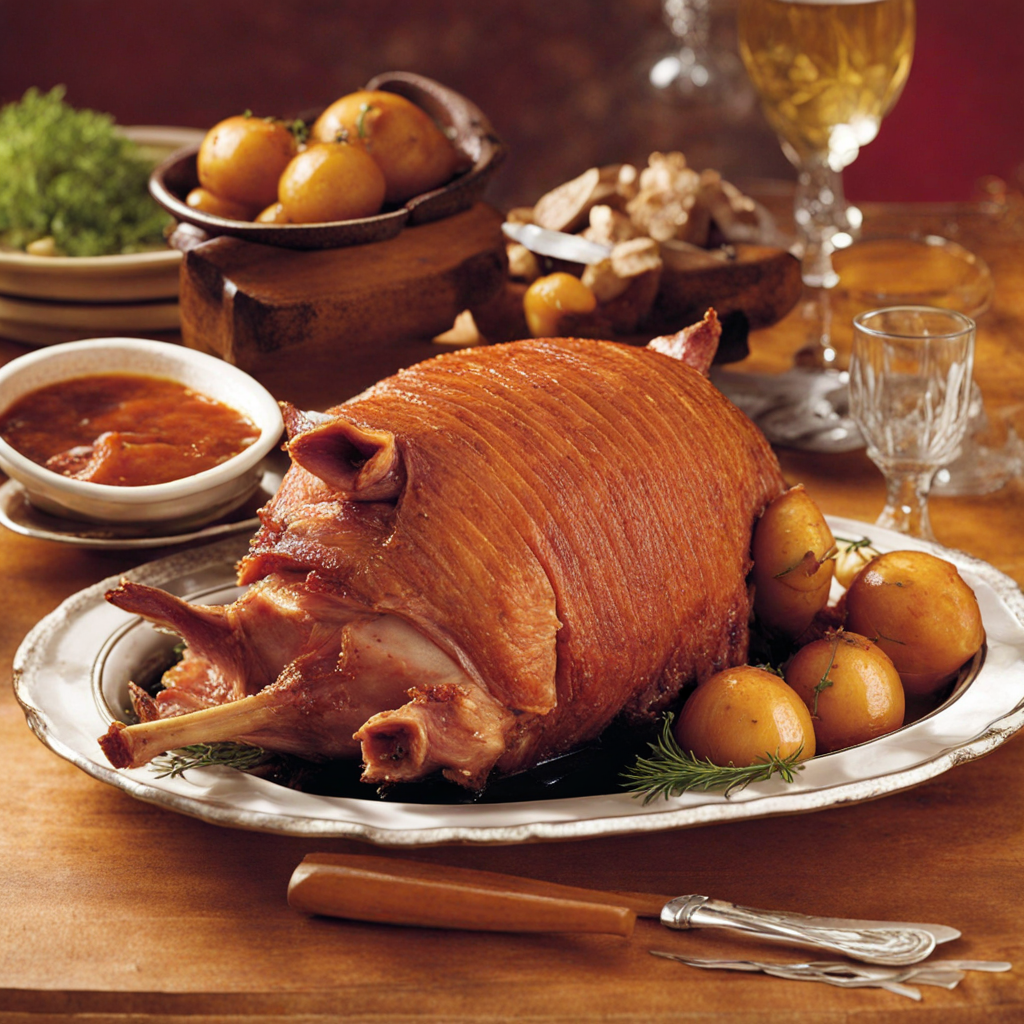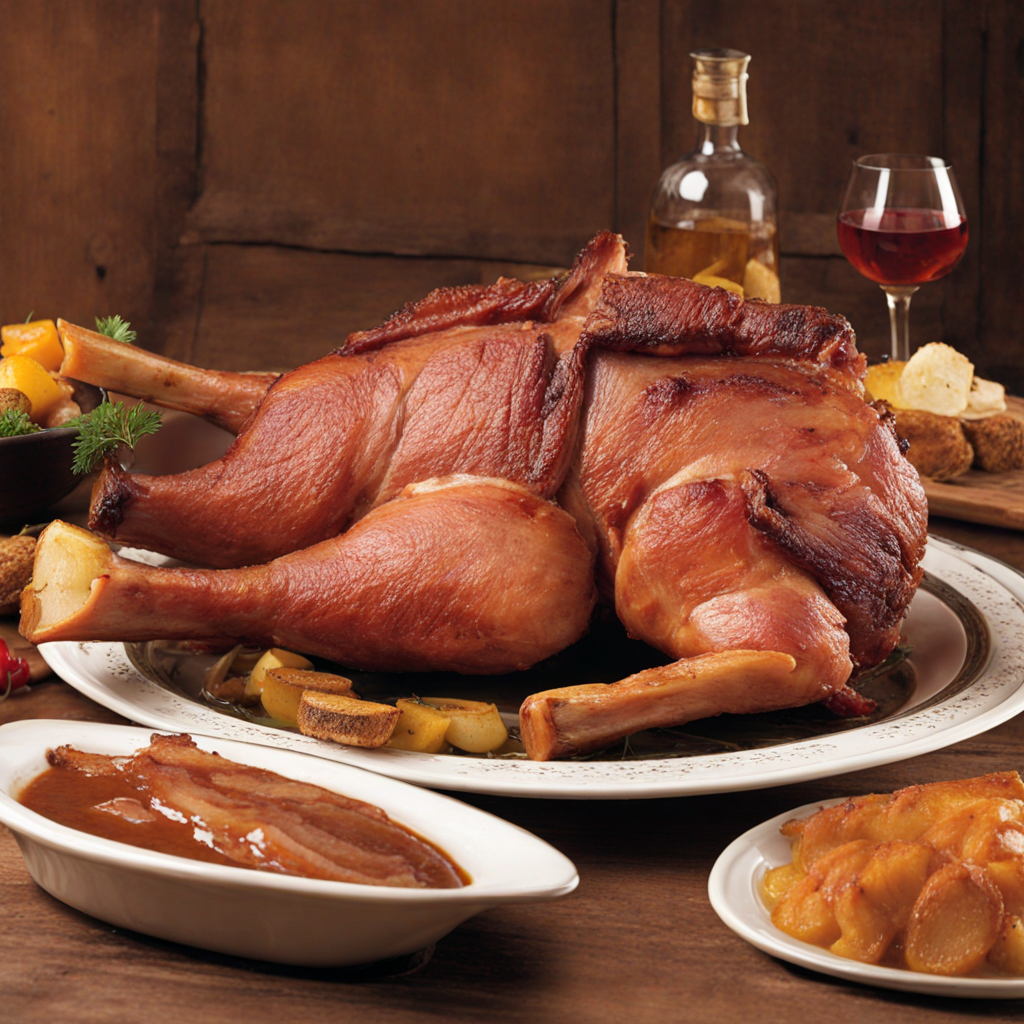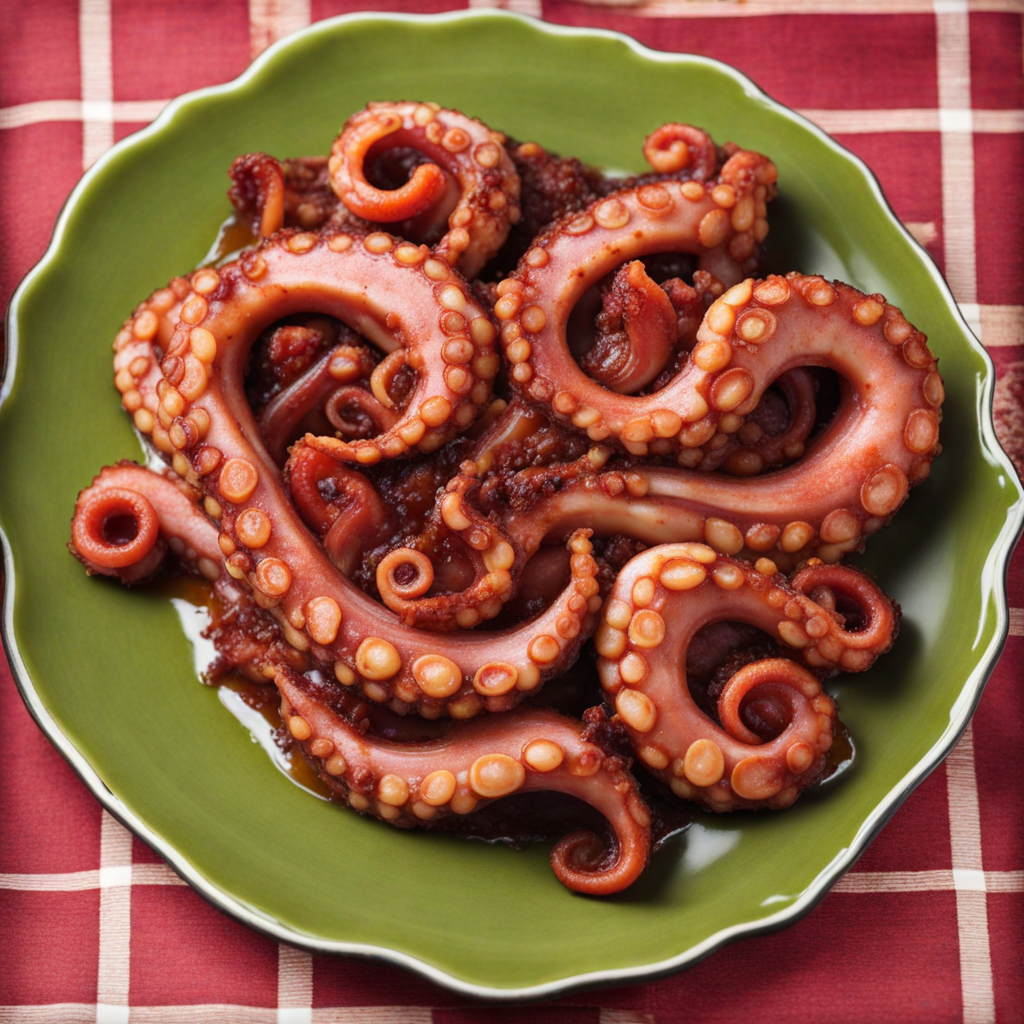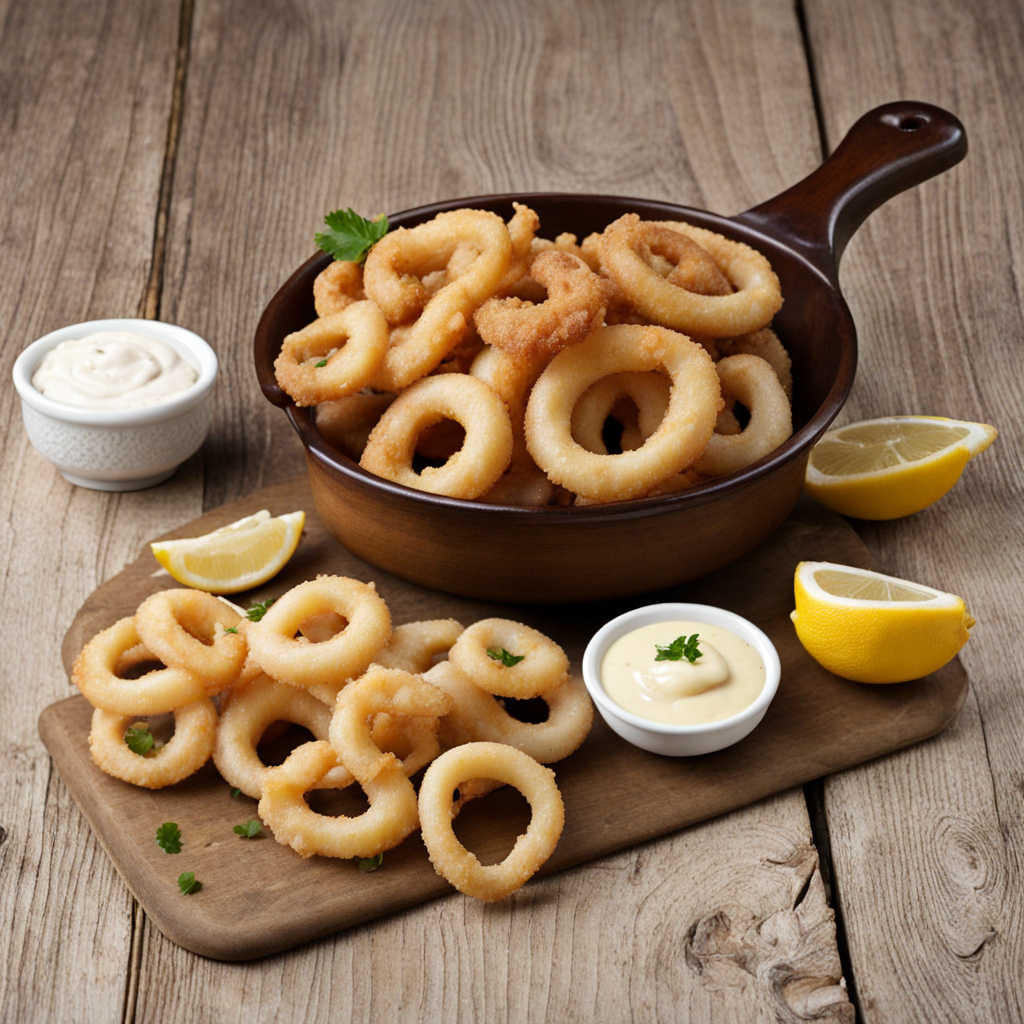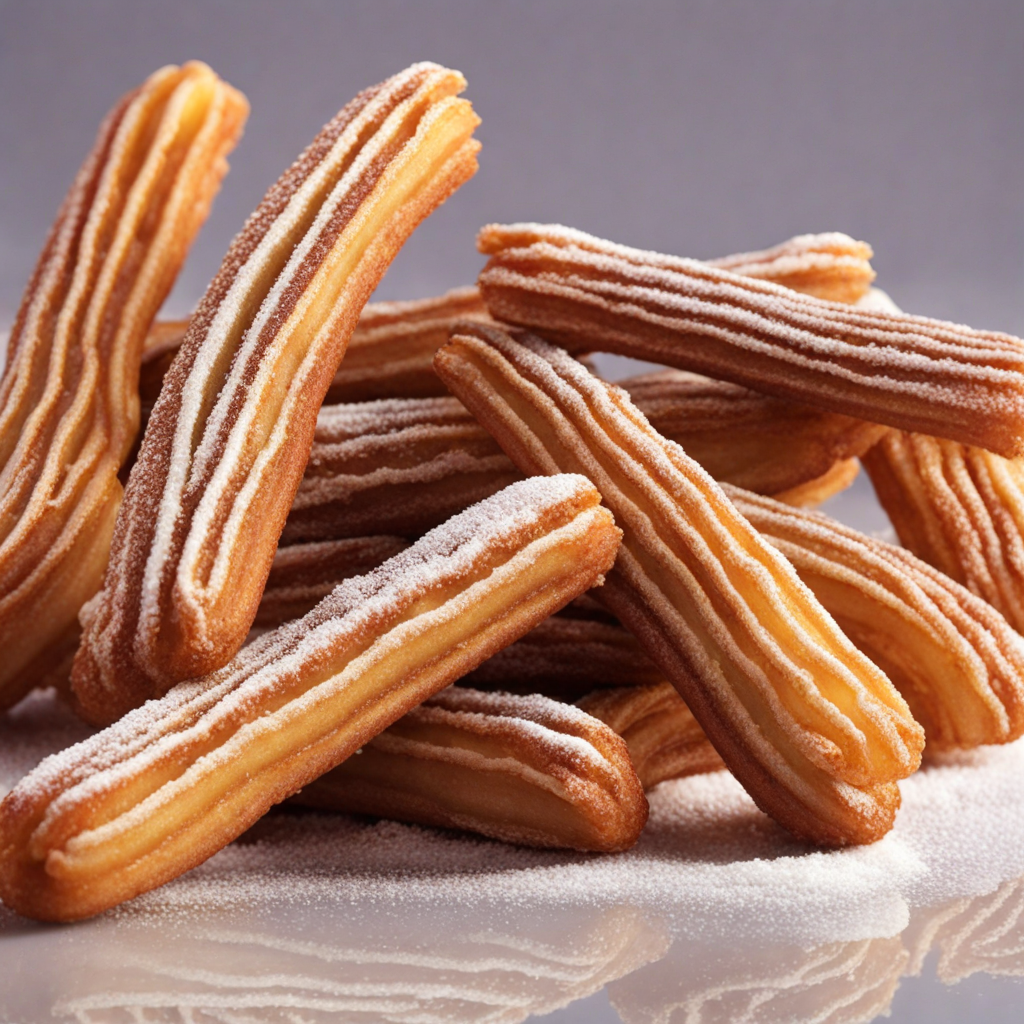Cochinillo Asado
Cochinillo Asado, or roasted suckling pig, is a traditional Spanish delicacy that hails from the region of Castilla y León, particularly famous in cities like Segovia. This dish is characterized by its tender, juicy meat and crispy skin, achieved through a slow roasting process that allows the flavors to develop fully. The pig, usually around three weeks old, is cooked whole in a wood-fired oven, which imparts a unique smokiness to the dish. The result is a beautifully golden-brown exterior that crackles delightfully when sliced, revealing succulent meat underneath that melts in your mouth with each bite. The preparation of Cochinillo Asado is steeped in tradition, with recipes passed down through generations. It is often seasoned simply with salt, allowing the natural flavors of the pork to shine. Some variations may include herbs or spices, but the essence of the dish lies in its simplicity. Served with sides such as roasted potatoes or a fresh salad, the dish is a feast for both the eyes and the palate, making it a centerpiece for festive gatherings and family celebrations. Eating Cochinillo Asado is an experience in itself, often accompanied by a ritualistic approach to serving it. In many restaurants, the chef will demonstrate the art of carving the pig by slicing through the crispy skin with a plate, showcasing its tenderness and quality. Each bite offers a delightful contrast of textures, with the crunch of the skin complementing the rich, flavorful meat. Whether enjoyed in a bustling restaurant or a cozy home setting, Cochinillo Asado promises a taste of Spain that is both unforgettable and indulgent.
How It Became This Dish
Cochinillo Asado: A Culinary Journey Through Time Cochinillo Asado, or roast suckling pig, is not merely a dish; it is a vibrant testament to Spain's rich culinary heritage, celebrating tradition, culture, and communal gatherings. This succulent dish, a staple in the region of Castilla y León, particularly in the province of Segovia, has evolved over centuries, embodying the essence of Spanish gastronomy. Origins The origins of Cochinillo Asado can be traced back to the rural traditions of Spain, where the practice of roasting a whole pig was commonplace during festive occasions. Historical records suggest that the dish was particularly favored by Spanish royalty, with references dating back to the Middle Ages. The famous "Libro de Arte Coquinaria" by the 14th-century chef, Ruperto de Nola, highlights the significance of roasting meats, including the revered piglet, as a symbol of abundance and celebration. Cochinillo Asado is especially associated with the region of Segovia, where the combination of local ingredients and unique cooking techniques has made it a culinary icon. The specific breed of pig used for the dish, the "Cochinillo de Segovia," is characterized by its tender meat and delicate flavor. These piglets, typically weaned at around three to four weeks old, are raised specifically for roasting, ensuring a quality that has become synonymous with the dish. Cultural Significance In Spain, food is an integral part of social life, and Cochinillo Asado is often the centerpiece of significant celebrations, such as weddings, religious festivals, and family gatherings. The dish is steeped in cultural traditions, often served during the Feast of San Juan, a midsummer celebration in June, where families gather to enjoy the delicacy under the stars. The preparation of Cochinillo Asado is not merely about cooking; it is an event that brings people together. Traditionally, the piglet is prepared with minimal seasoning to allow its natural flavors to shine. The skin is often scored, and it is roasted in a wood-fired oven, a method that has been passed down through generations. The crackling skin, golden and crisp, contrasts beautifully with the tender, juicy meat beneath, creating a sensory experience that is both indulgent and comforting. The Roasting Process The method of preparing Cochinillo Asado is an art form in itself. The piglet is typically roasted whole, often on a bed of potatoes that absorb the flavorful drippings. The cooking process can take several hours, during which the piglet is basted periodically to ensure even cooking and to enhance the flavor. The temperature is carefully controlled to create a perfect balance between a crispy exterior and succulent meat. In Segovia, the tradition of roasting cochinillo has become so revered that it is often served with a ceremonial flair. In some restaurants, the piglet is presented to diners with great pomp, and the chef may even demonstrate the traditional technique of cutting the meat with a plate, a spectacle that underscores the dish's significance and the skill involved in its preparation. Evolution Over Time As Spain transitioned through various historical periods, from the Reconquista to the modern age, the preparation and appreciation of Cochinillo Asado evolved alongside societal changes. The dish became emblematic of Spanish identity, celebrated not just within the borders of Spain but also in international culinary circles. In the late 20th century, with the rise of Spanish cuisine as a global phenomenon, Cochinillo Asado found its way onto international menus, captivating the palates of food enthusiasts around the world. The dish's rich flavors and cultural significance have made it a sought-after culinary experience, often featured in high-end restaurants and gourmet food festivals. Moreover, chefs have begun to experiment with variations of the traditional recipe, incorporating modern techniques while respecting the essence of the dish. Some have introduced innovative accompaniments, such as fruit sauces or fusion elements, to elevate the dining experience while still honoring the original flavors of Cochinillo Asado. Regional Variations While Segovia remains the undisputed capital of Cochinillo Asado, other regions of Spain have developed their own interpretations of the dish. In the region of Extremadura, for example, the dish is often prepared with a focus on local spices and herbs, adding a distinct flavor profile. In Andalucía, variations may include different cooking methods, such as grilling or smoking, showcasing the diversity of Spanish culinary traditions. Modern Day Significance Today, Cochinillo Asado continues to be a symbol of celebration and community in Spain. It is a dish that transcends generations, with families passing down recipes and techniques through the years. The cultural significance of the dish is reinforced during festive seasons, where it serves as a reminder of Spain's agricultural roots and the importance of local produce. In recent years, there has also been a growing movement towards sustainability and ethical farming practices. Many chefs and restaurateurs are now emphasizing the importance of sourcing their cochinillos from local, humane farms, ensuring that the traditions surrounding the dish are not only preserved but also aligned with contemporary values. Conclusion Cochinillo Asado is more than just a culinary delight; it is a reflection of Spain’s history, culture, and communal spirit. From its origins in medieval feasts to its status as a modern gastronomic treasure, this dish continues to captivate and unite people around the table. As Spain evolves, Cochinillo Asado remains a cherished symbol of its rich culinary tapestry, inviting both locals and visitors to partake in a tradition that celebrates the joys of good food, family, and fellowship. The next time you encounter this delectable dish, remember that you are not just enjoying a meal; you are partaking in a centuries-old story that continues to unfold with every bite.
You may like
Discover local flavors from Spain


